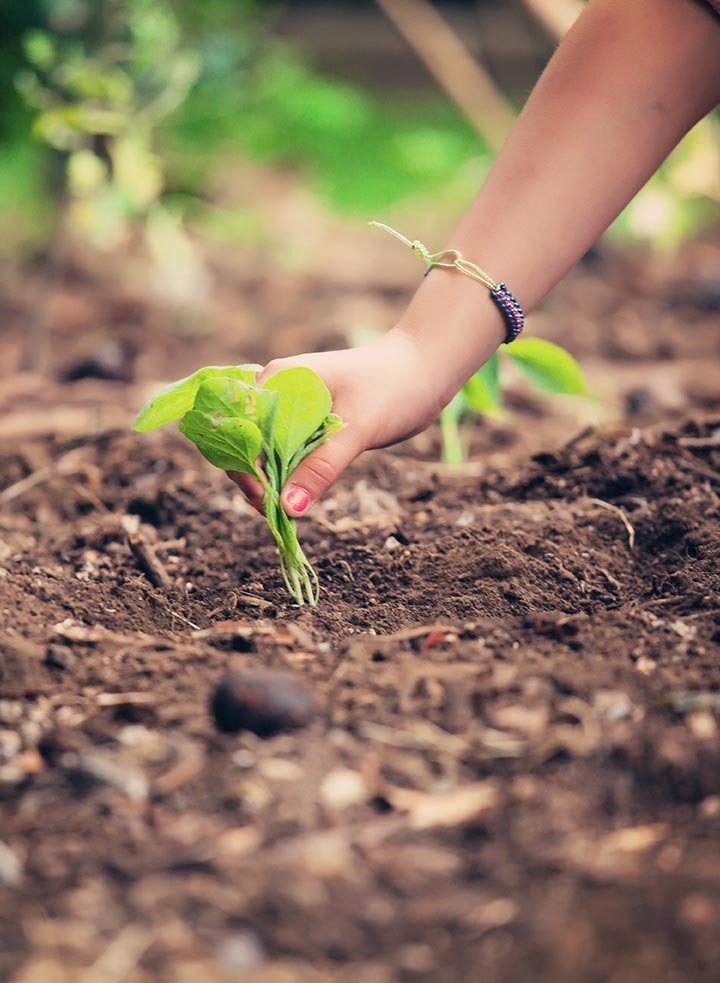A PLANT-BASED DIET
CAN REDUCE WORLD HUNGER
As the world’s population expands, the question of how we can feed the world fairly and
sustainably has never been more urgent. A plant-based diet can help to create
a fairer world and a more sustainable food supply for all of us.
PROVEG MEANS PRO JUSTICE
The impact of animal agriculture on world hunger
World population is increasing and with it the ever-growing risks of hunger, starvation, water scarcity, and environmental disasters. The question of how we feed the world fairly and sustainably has never been more urgent. A plant-based diet uses fewer resources, creates less pollution and pesticides, and can contribute to a fairer and more equal world. ProVeg provides information on how the production of animal products exacerbates both world hunger and the unfair distribution of food.
Unequal distribution of food is a global problem
Globally, nearly 815 million people are undernourished.[1]Food and Agriculture Organization of the United Nations, International Fund for Agricultural Development, UNICEF, et al. (2017): The state of food security and nutrition in the world 2017: building … Continue reading At the same time, nearly 2 billion people are overweight, with 650 million suffering from obesity.[2]WHO (2018): Obesity and overweight. Available at: http://www.who.int/mediacentre/factsheets/fs311/en/ [12.02.2018] It is expected that world population will grow by more than 30% by 2050, with around 11-13 billion people on the planet by 2100.[3]UN (2017): World population projected to reach 9.8 billion in 2050, and 11.2 billion in 2100. Available at https://www.un.org/development/desa/en/news/population/world-population-prospects-2017.html … Continue reading [4]Gerland, P., A. E. Raftery, H. Sevčíková, et al. (2014): World population stabilization unlikely this century. Science. 346, p.234–237 The question of how to distribute our resources and feed a growing global population in order to create a just world with less hunger, animal suffering, and environmental problems has never been more relevant. Achieving food security for everyone means doing more to ensure that everyone has reliable access to sufficient, safe, and nutritious food in order to maintain an active and healthy life.[5]Food and Agricultural Organisation of the United Nations (FAO) (1996): Rome Declaration on World Food Security and World Food Summit Plan of Action. World Food Summit 13-17 November 1996. Rome. … Continue reading
Animal farming wastes a staggering amount of food
However, the real waste occurs in animal agriculture. Over 50% of the world’s crops are grown to feed livestock, not people.[6]Hertwich, E. (2010): Assessing the Environmental Impacts of Consumption and Production: Priority Product and Materials. Programa de la Naciones Unidas para el Medio Ambiente. p. 80 If all crops were used exclusively for direct human consumption, it would increase available food calories by 70%, which would mean that an additional 4 billion people could be fed.[7]Cassidy, E. S., P. C. West, J. S. Gerber, et al. (2013): Redefining agricultural yields: from tonnes to people nourished per hectare. Environ. Res. Lett. 8, p.034015 This means that with a purely plant-based diet more than 10 billion people could be fed using existing agricultural land.[8]Cassidy, E. S., P. C. West, J. S. Gerber, et al. (2013): Redefining agricultural yields: from tonnes to people nourished per hectare. Environ. Res. Lett. 8, p.034015 [9]Erb, K.-H., C. Lauk, T. Kastner, et al. (2016): Exploring the biophysical option space for feeding the world without deforestation. Nature Communications. 7, p.11382 [10]The Guardian (2016): Can we feed 10 billion people on organic farming alone? Available at: https://www.theguardian.com/sustainable-business/2016/aug/14/organic-farming-agriculture-world-hunger … Continue reading
Intensive livestock production uses about a third of the world’s grain, and about 75% of soy, undermining global food security.[11]Food and Agriculture Organization of the United Nations (2017): Crop Prospects and Food Situation. March 2017. p.7 .FAO, Rome [12]Brack, D., A. Glover & L. Wellesley (2016): Agricultural Commodity Supply Chains Trade, Consumption and Deforestation. Chatham House, London. p. 24 Feeding grain and soy to animals and subsequently consuming their meat and milk is less efficient in terms of energy, protein, and land use than eating the plants directly.[13]Garnett T. (2010). Livestock, feed and food security. FCRN Briefing paper. Soy, a major livestock feed, can provide up to 15 times more protein per hectare than food of animal origin. Many other legumes and grains also have higher levels of digestible protein per acre.[14]Giovannucci, D., S. Scherr, D. Nierenberg, et al. (2012): Food and Agriculture: the future of sustainability. A strategic input to the Sustainable Development in the 21st Century (SD21) project. New … Continue reading
Meat production causes deforestation and promotes land grabbing
The growing demand for animal products requires developed nations to import hundreds of thousands of tons of animal feed – in particular, soy, corn, and grains – from developing countries in South America and Africa. The EU’s average land consumption per capita is 1.3 hectares, while citizens of countries such as China and India require less than 0.4 hectares per capita.[15]B. Lugschitz, M. Bruckner und S. Giljum (2011): Europe‘s global land demand: a study on the actual land embodied in European imports and exports of agricultural and forestry products. Wien: … Continue reading Nearly 60% of the land required to satisfy the EU’s demand for agricultural and forestry products lies outside Europe. Every year, Germany and the UK each import products requiring more than 80 million hectares of land outside their own borders.[16]B. Lugschitz, M. Bruckner und S. Giljum (2011): Europe‘s global land demand: a study on the actual land embodied in European imports and exports of agricultural and forestry products. Wien: … Continue reading This is neither fair nor sustainable.
Plant-based diets have a smaller water footprint
Additionally, animal agriculture requires nearly one-third of the world’s total agricultural water footprint.[17]Mekonnen M.M. and Hoekstra A. (2012). A Global Assessment of the Water Footprint of Farm Animal Products. Ecosystems, DOI: 10.1007/s10021-011-9517-8 [07.03.2018] Today, more than 2.1 billion people lack access to safe drinking water.[18]WHO (2017): 2.1 billion people lack safe drinking water at home, more than twice as many lack safe sanitation. Available at: … Continue reading Water scarcity is likely to increase, and it is expected that by 2025 around 1.8 billion people will be living in countries or regions with water scarcity.[19]WWAP (World Water Assessment Programme) (2012): The United Nations World Water Development Report 4: Managing Water under Uncertainty and Risk. Paris, UNESCO. p 541 The water footprint of any animal-based product is larger than that of plant-based products with equivalent nutritional value, making it more water-efficient to obtain calories, protein, and nutrients from plants than from animals.
A plant-based diet requires far fewer resources
Animal agriculture contributes to deforestation and land-use change, in this case, the conversion of wilderness into farmland. The livestock and fishing industries are partially responsible for the loss of biodiversity, decreased ecosystem functions, climate change, water shortages, and pollution. The consumption of animal-based products on a massive scale decreases food security for hundreds of millions of people from the Global South who are negatively affected by the land-use changes necessary to produce these products. Their land is used to raise crops to feed livestock in wealthy countries, and their oceans are overfished to satisfy demand abroad, while they themselves frequently struggle to simply survive.
Meat, dairy, eggs, and fish are, in truth, luxury foods that the vast majority of people do not need if well-balanced and varied plant-based diets are available.
ProVeg supports the availability of plant-based alternatives
ProVeg is committed to creating a fairer food system by not contributing to exploitation and demanding that politicians change agricultural and food policies to benefit people, animals, and the environment. Furthermore, ProVeg points out healthy, cruelty-free alternatives to animal products and makes them more readily available by advising and supporting innovative companies that want to enrich the veggie market with their products. In its political work, ProVeg advocates and communicates the potential of plant-based lifestyles for tackling various problem areas such as resource conservation, environmental protection, and animal welfare.
References[+]
| ↑1 | Food and Agriculture Organization of the United Nations, International Fund for Agricultural Development, UNICEF, et al. (2017): The state of food security and nutrition in the world 2017: building resilience for peace and food security. p. 2 |
|---|---|
| ↑2 | WHO (2018): Obesity and overweight. Available at: http://www.who.int/mediacentre/factsheets/fs311/en/ [12.02.2018] |
| ↑3 | UN (2017): World population projected to reach 9.8 billion in 2050, and 11.2 billion in 2100. Available at https://www.un.org/development/desa/en/news/population/world-population-prospects-2017.html [08.03.2018] |
| ↑4 | Gerland, P., A. E. Raftery, H. Sevčíková, et al. (2014): World population stabilization unlikely this century. Science. 346, p.234–237 |
| ↑5 | Food and Agricultural Organisation of the United Nations (FAO) (1996): Rome Declaration on World Food Security and World Food Summit Plan of Action. World Food Summit 13-17 November 1996. Rome. Available at http://www.fao.org/docrep/005/y4671e/y4671e06.htm#fn30 [07.03.2018] |
| ↑6 | Hertwich, E. (2010): Assessing the Environmental Impacts of Consumption and Production: Priority Product and Materials. Programa de la Naciones Unidas para el Medio Ambiente. p. 80 |
| ↑7, ↑8 | Cassidy, E. S., P. C. West, J. S. Gerber, et al. (2013): Redefining agricultural yields: from tonnes to people nourished per hectare. Environ. Res. Lett. 8, p.034015 |
| ↑9 | Erb, K.-H., C. Lauk, T. Kastner, et al. (2016): Exploring the biophysical option space for feeding the world without deforestation. Nature Communications. 7, p.11382 |
| ↑10 | The Guardian (2016): Can we feed 10 billion people on organic farming alone? Available at: https://www.theguardian.com/sustainable-business/2016/aug/14/organic-farming-agriculture-world-hunger [20.03.2018] |
| ↑11 | Food and Agriculture Organization of the United Nations (2017): Crop Prospects and Food Situation. March 2017. p.7 .FAO, Rome |
| ↑12 | Brack, D., A. Glover & L. Wellesley (2016): Agricultural Commodity Supply Chains Trade, Consumption and Deforestation. Chatham House, London. p. 24 |
| ↑13 | Garnett T. (2010). Livestock, feed and food security. FCRN Briefing paper. |
| ↑14 | Giovannucci, D., S. Scherr, D. Nierenberg, et al. (2012): Food and Agriculture: the future of sustainability. A strategic input to the Sustainable Development in the 21st Century (SD21) project. New York: United Nations Department of Economic and Social Affairs, Division for Sustainable Development. p. 10 |
| ↑15 | B. Lugschitz, M. Bruckner und S. Giljum (2011): Europe‘s global land demand: a study on the actual land embodied in European imports and exports of agricultural and forestry products. Wien: Sustainable Europe Research Institute, 2011. p. 14 |
| ↑16 | B. Lugschitz, M. Bruckner und S. Giljum (2011): Europe‘s global land demand: a study on the actual land embodied in European imports and exports of agricultural and forestry products. Wien: Sustainable Europe Research Institute, 2011. p. 22 |
| ↑17 | Mekonnen M.M. and Hoekstra A. (2012). A Global Assessment of the Water Footprint of Farm Animal Products. Ecosystems, DOI: 10.1007/s10021-011-9517-8 [07.03.2018] |
| ↑18 | WHO (2017): 2.1 billion people lack safe drinking water at home, more than twice as many lack safe sanitation. Available at: http://www.who.int/mediacentre/news/releases/2017/water-sanitation-hygiene/en/ [12.03.2018] |
| ↑19 | WWAP (World Water Assessment Programme) (2012): The United Nations World Water Development Report 4: Managing Water under Uncertainty and Risk. Paris, UNESCO. p 541 |

